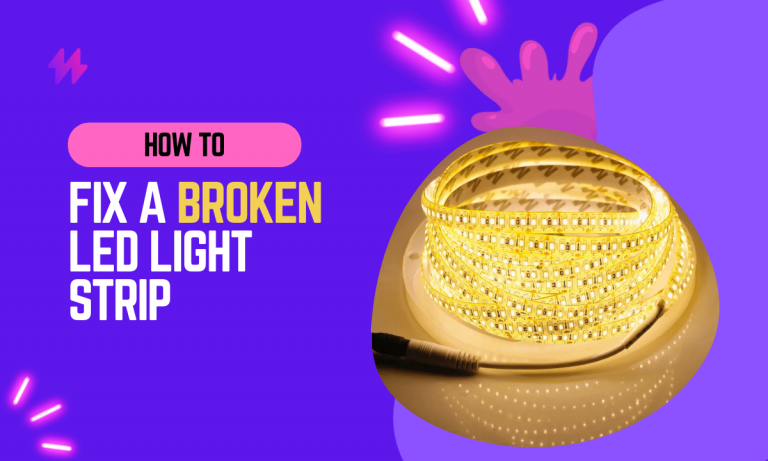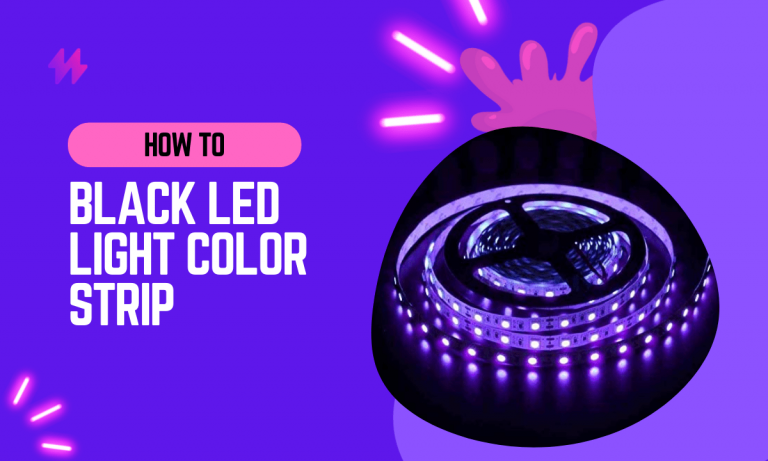Do LED Strip Lights Need a Heat Sink?
LED strip lights are a popular choice for lighting up homes, businesses, and other spaces. They’re energy-efficient, long-lasting, and come in a variety of colors and styles. But one question that often comes up is whether or not LED strip lights need a heat sink.
In this article, I’ll discuss the purpose of heat sinks, how they work, and whether or not LED strip lights need them. I’ll also share my own experience as a LED light technician with over 10 years of experience.
What is a Heat Sink?
A heat sink is a device that is used to dissipate heat. It does this by transferring heat from a hotter object to a cooler object. Heat sinks are typically made of metal, and they have a large surface area that allows for efficient heat transfer.
How Do Heat Sinks Work?
When heat is applied to a heat sink, the metal atoms in the heat sink begin to vibrate. This vibration causes the electrons in the metal to move more quickly, which creates heat. The heat is then transferred to the cooler air around the heat sink, where it is dissipated.
Do LED Strip Lights Need a Heat Sink?
LED strip lights do not generate as much heat as other types of lighting, such as incandescent bulbs or halogen bulbs. This is because LEDs are much more efficient at converting electrical energy into light energy. However, even though LED strip lights do not generate as much heat as other types of lighting, they can still benefit from the use of a heat sink.
In my experience as a LED light technician, I have found that LED strip lights that are installed in enclosed spaces or that are exposed to high levels of heat benefit the most from the use of a heat sink. This is because the enclosed space or the high levels of heat can cause the LED strip lights to overheat, which can shorten their lifespan and reduce their brightness.
If you are considering installing LED strip lights in an enclosed space or in an area that is exposed to high levels of heat, I recommend using a heat sink to protect your investment.
In the next section of this article, I will discuss the different types of heat sinks that are available for LED strip lights. I will also provide some tips on how to choose the right heat sink for your application.
Do LED Strip Lights Need a Heat Sink?
LED strip lights are a popular choice for lighting accents, under-cabinet lighting, and other applications. But do LED strip lights need a heat sink?
The answer is: it depends.
In this article, we’ll discuss the factors that affect whether or not an LED strip light needs a heat sink. We’ll also provide some tips on how to choose the right heat sink for your LED strip light.
What is a Heat Sink?
A heat sink is a device that is used to dissipate heat. It does this by transferring heat from the LED strip light to a larger surface area, which allows the heat to dissipate more easily.
Heat sinks are typically made of metal, and they can have a variety of shapes and sizes. The most common type of heat sink for LED strip lights is a flat, rectangular plate.
Why do LED Strip Lights Need a Heat Sink?
LED strip lights generate heat as they operate. This is because the electrical current flowing through the LEDs creates resistance, which in turn generates heat.
If the heat from the LEDs is not dissipated properly, it can damage the LEDs and shorten their lifespan. In some cases, it can even cause the LEDs to fail completely.
What Factors Affect Whether or Not an LED Strip Light Needs a Heat Sink?
There are a few factors that affect whether or not an LED strip light needs a heat sink. These factors include:
- The power of the LED strip light
- The length of the LED strip light
- The ambient temperature
- The type of LED strip light
How to Choose the Right Heat Sink for Your LED Strip Light
When choosing a heat sink for your LED strip light, you need to consider the following factors:
- The power of the LED strip light
- The length of the LED strip light
- The ambient temperature
- The type of LED strip light
You can find a variety of heat sinks available online and at hardware stores. Be sure to choose a heat sink that is the right size and shape for your LED strip light.
Tips for Installing a Heat Sink on Your LED Strip Light
Installing a heat sink on your LED strip light is a relatively simple process. Here are a few tips to help you get the job done:
- Choose the right heat sink. As we mentioned above, you need to choose a heat sink that is the right size and shape for your LED strip light.
- Clean the surface of the LED strip light. Before you install the heat sink, you need to clean the surface of the LED strip light to remove any dirt or debris.
- Apply thermal paste. Thermal paste is a type of conductive material that helps to transfer heat from the LED strip light to the heat sink. Apply a thin layer of thermal paste to the surface of the LED strip light before installing the heat sink.
- Secure the heat sink. Once you have applied the thermal paste, you need to secure the heat sink to the LED strip light. You can use screws, adhesive, or another type of fastener.
Conclusion
Additional Resources
[How to Choose the Right Heat Sink for Your LED Strip Lights](https://www.ledsupply.com/blog/how-to-choose-the-right-heat-sink-for-your-led-strip-lights/)
[How to Install a Heat Sink on Your LED Strip Lights](https://www.ledsupply.com/blog/how-to-install-a-heat-sink-on-your-led-strip-lights/)
FAQs
Do LED strip lights need a heat sink?
Most LED strip lights do not require a heat sink, as they are designed to operate at a relatively low temperature. However, some high-powered LED strip lights may benefit from the use of a heat sink, as it can help to dissipate heat and prevent the lights from overheating.
What is a heat sink?
A heat sink is a device that is used to transfer heat from one object to another. In the case of LED strip lights, a heat sink can help to dissipate heat from the LED chips and prevent them from overheating. Heat sinks are typically made of metal, and they can be either passive or active. Passive heat sinks rely on conduction to transfer heat, while active heat sinks use fans or other methods to actively move heat away from the LED chips.
How do I know if my LED strip lights need a heat sink?
If you are not sure whether your LED strip lights need a heat sink, it is best to consult the manufacturer’s instructions. The manufacturer will be able to tell you whether the lights are designed to operate without a heat sink, or if they will benefit from the use of one.
What are the benefits of using a heat sink with LED strip lights?
Using a heat sink with LED strip lights can provide a number of benefits, including:
Increased lifespan: Heat can damage LED chips, so using a heat sink can help to extend the lifespan of your lights.
Improved performance: A heat sink can help to dissipate heat and prevent the lights from overheating, which can improve their performance.
Reduced noise: Active heat sinks that use fans can help to reduce noise from your LED strip lights.
What are the drawbacks of using a heat sink with LED strip lights?
The main drawback of using a heat sink with LED strip lights is that it can increase the cost of the lights. Heat sinks can also add bulk to the lights, which may not be desirable in some applications.






